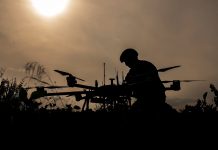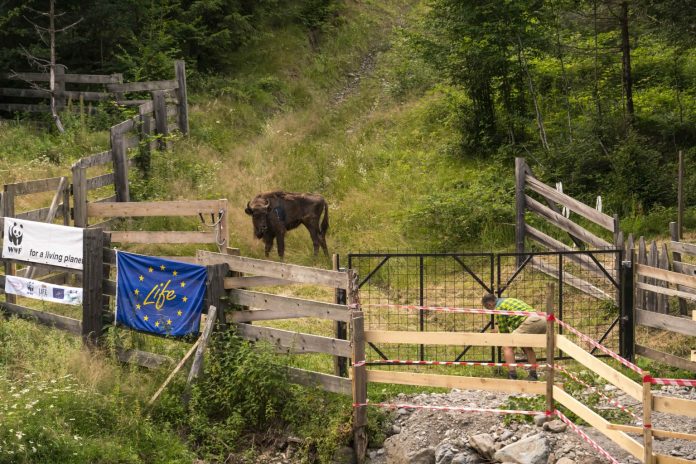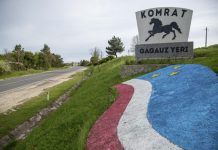Eight bison have arrived in Romania to start a new life in the wild with another 57 free-roaming bison in the southern Carpathian Mountains.
The animals ended their journey at Bison Hillock in the village of Armenis, southewestern Romania earlier this week. Their arrival has raised the wild bison population to the largest it’s been in 200 years, thanks to a program initiated by Rewilding Europe and WWF Romania according to a press release.
The newly arrived herd of six females and two males came from six reservations in Germany and Switzerland
The Springe reservation in Germany accommodated the females for several months to allow them to form a closely-knit herd, a method that ensures the group has a smoother transition to their new environment.
Rangers and veterinarians will monitor the eight bison as they acclimatize. Then, they will be released into a larger area where they will have the chance to explore forests and meadows_ and meet the other bison.
„The gates to actual freedom will open a few months later, and the bison will then be able to mingle with the (other animals) who have already adapted to the wild area of the Țarcu Mountains and avoid further human interaction,” the press release said.
„Every transport and every birth in the wild are a success for the conservation of these vulnerable animals, “ said Marina Druga, LIFE-Bison Project Manager, WWF Romania. “ Animals, plants, our health and sustainable community development, ecotourism, all depend on them returning in the wild.”
The European bison is one of the world’s most threatened large mammals, and receives protection at a European level.
WWF Central and Eastern Europe’s and Rewilding Europe’s Life Bison Project aims to establish a wild bison population that is demographically and genetically viable, by reintroducing 100 individuals in south-western Romania, one of the largest remaining wildernesses in Europe.
The European bison (or wisent) disappeared from Romania about 200 years ago. Since 2013, Rewilding Europe and WWF Romania have been working together in the Southern Carpathians rewilding area to reintroduce the species.
The first two bison releases took place in 2014 and 2015.
In June 2016, a third bison release took place as part of the European Commission-funded LIFE Bison project, with a fourth release of nine animals taking place in April 2017.
The major objective of this ongoing project is to create a demographically and genetically viable population in the Southern Carpathians, comprising free-roaming sub-populations in the Tarçu Mountains and nearby Poiana Ruscă Mountains. The total number of bison in the area, taking into account deaths and births, was 30 by the end of 2017.



















